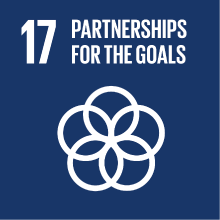HISTORY OF MODERN AND CONTEMPORARY JAPAN
- Academic year
- 2019/2020 Syllabus of previous years
- Official course title
- STORIA DEL GIAPPONE MODERNO E CONTEMPORANEO
- Course code
- LT2800 (AF:321279 AR:136149)
- Teaching language
- Italian
- Modality
- On campus classes
- ECTS credits
- 6
- Degree level
- Bachelor's Degree Programme
- Academic Discipline
- SPS/14
- Period
- 1st Semester
- Course year
- 3
Contribution of the course to the overall degree programme goals
a) knowledge of the historical context inside which the contacts between Europe and Japan developed from the age of exploration to the age of imperialism, with a focus on the evolution of the European racial discourse and the shift of European perception of Japanese from a ‘white’ to a ‘yellow’ race;
b) ability to critically understand the modalities of interactions between Europe and non-European societies as well as the political, economic, religious and cultural factors which contributed to the formulation of stereotypes and prejudices towards others;
c) ability to consciously apply these knowledge and understanding to contemporary problems such as those of interactions with otherness.
Expected learning outcomes
a) knowledge of the historical context inside which the contacts between Europe and Japan developed from the age of exploration to the age of imperialism, with a focus on the evolution of the European racial discourse and the shift of European perception of Japanese from a ‘white’ to a ‘yellow’ race;
b) ability to critically understand the modalities of interactions between Europe and non-European societies as well as the political, economic, religious and cultural factors which contributed to the formulation of stereotypes and prejudices towards others;
c) ability to consciously apply these knowledge and understanding to contemporary problems such as those of interactions with otherness.
Pre-requirements
Contents
Referral texts
R. Kowner, “The skin as a metaphor: early European racial perspectives on Japan, 1548-1853”, in Ethnohistory 51, p. 751–778 (http://asia.haifa.ac.il/staff/kovner/(17)Kowner.2004a.pdf );
M. Keevak, Becoming Yellow. A Short History of Racial Thinking, Princeton University Press, 2011;
R. Caroli, “Una metropoli alla fine dell’Asia: Edo narrata dagli europei”, in Storia Urbana, vol. 146/2015, pp. 39-68;
E. Said, Orientalismo. L’immagine europea dell’Oriente, Feltrinelli, Milano 2002 (Introduzione e capitoli 1-4, pp. 11-114).
In addition to the above texts, not-attending students will choose one among the following texts:
M. Cooper, Rodrigues, o interprete: Im jesuita no Japao e na China, Quetzal, Lisboa 1994.
M. Cooper, Rodrigues the Interpreter: An early Jesuit in Japan and China, Weatherhill, Tokyo, 1974.
C. R. Boxer, The Christian Century in Japan 1549-1650, University of California Press, Berkeley and Los Angeles, 1967 (ed. or. 1951).
R. Cocks, Diary of Richard Cocks. Cape-merchant in the English Factory in Japan 1615-1622…, Tōkyō 1899.
E. Kaempfer, The History of Japan. Together with a Description of the Kingdom of Siam, 1690-92, New York, vol. III.
J. Saris, The voyage of Captain John Saris to Japan, 1613, edited by Ernest Mason Satow, Bristol-Tokyo, 1998 (ed. or. 1900) (https://archive.org/details/in.ernet.dli.2015.47339/page/n7 )
N. Murakami and K. Murakawa (eds) , Letters written by the English residents in Japan, 1611-1623… , Tokyo 1900 (https://archive.org/details/letterswrittenby00mura/page/n10 )
F. Pasio, Tre lettere annue del Giappone, de gli anni 1603. 1604. 1605. e parte del 1606. Mandate dal P. Francesco Pasio V,,., Roma 1608 (https://archive.org/details/bub_gb_2HuJtvRRtaIC/page/n4 )
D. Bartoli, Dell’istoria della Compagnia di Gesù. Il Giappone seconda parte dell’Asia descritta dal p. Daniello Bartoli…, vol. X, libro primo, 1825 (https://archive.org/details/bub_gb_EIFM68dzSrQC/page/n1 )
F. Caron, A True Description of the Mighty Kingdoms of Japan and Siam, Samuel Broun & John de l'Ecluse, London 1663 (https://quod.lib.umich.edu/e/eebo/A34454.0001.001?view=toc )
A. Montanus, Ambassades Mémorables De La Compagnie Des Indes Orientales Des Provinces Unies Vers Les Empereurs Du Japon, 1680 (https://gallica.bnf.fr/ark:/12148/bpt6k95928w.image )
S. Vizcaíno, Una Relación de Japón de 1614 sobre el viaje de Sebastián Vizcaíno (http://www.archivodelafrontera.com/wp-content/uploads/2013/11/Relación-del-viaje-de-Sebastián-Vizca%C3%ADno-1612-1614.pdf )
R. de Vivero, Relación del Japón (1609), por Rodrigo de Vivero y Velazco. Introducción y notas, 1934 (https://mexicana.cultura.gob.mx/es/repositorio/detalle?id=_suri:MEDIATECAARTICULO:TransObject:5bca29f67a8a0222ef131e0d )
F. Guerreiro, Relação anual das coisas que fizeram os padres da Companhia de Jesus nas suas Missões do Japão, China, Cataio..., tomo II, Coimbra 1931 (http://purl.pt/26224/4/r-27919-v/r-27919-v_item4/r-27919-v_PDF/r-27919-v_PDF_24-C-R0150/r-27919-v_0000_1-442_t24-C-R0150.pdf )
Assessment methods
1) a theme/topic chosen by the student, aiming at testing his/her ability to (a) put the issue in its proper historical contex and (b) develop and articulate a coherent historical narrative;
2) a question aiming at verifying his/her ability to (a) connect historical events and processes to specific circumstances of time and place as well as to broader processes occurring at the same time and (b) to make appropriate use of historical terminology, sources and methodologies;
3) a question aiming at verifying his/her ability to consciously apply the acquired knowledge and understanding to contemporary problems such as those of interactions with otherness.
Type of exam
Teaching methods
2030 Agenda for Sustainable Development Goals
This subject deals with topics related to the macro-area "International cooperation" and contributes to the achievement of one or more goals of U. N. Agenda for Sustainable Development


